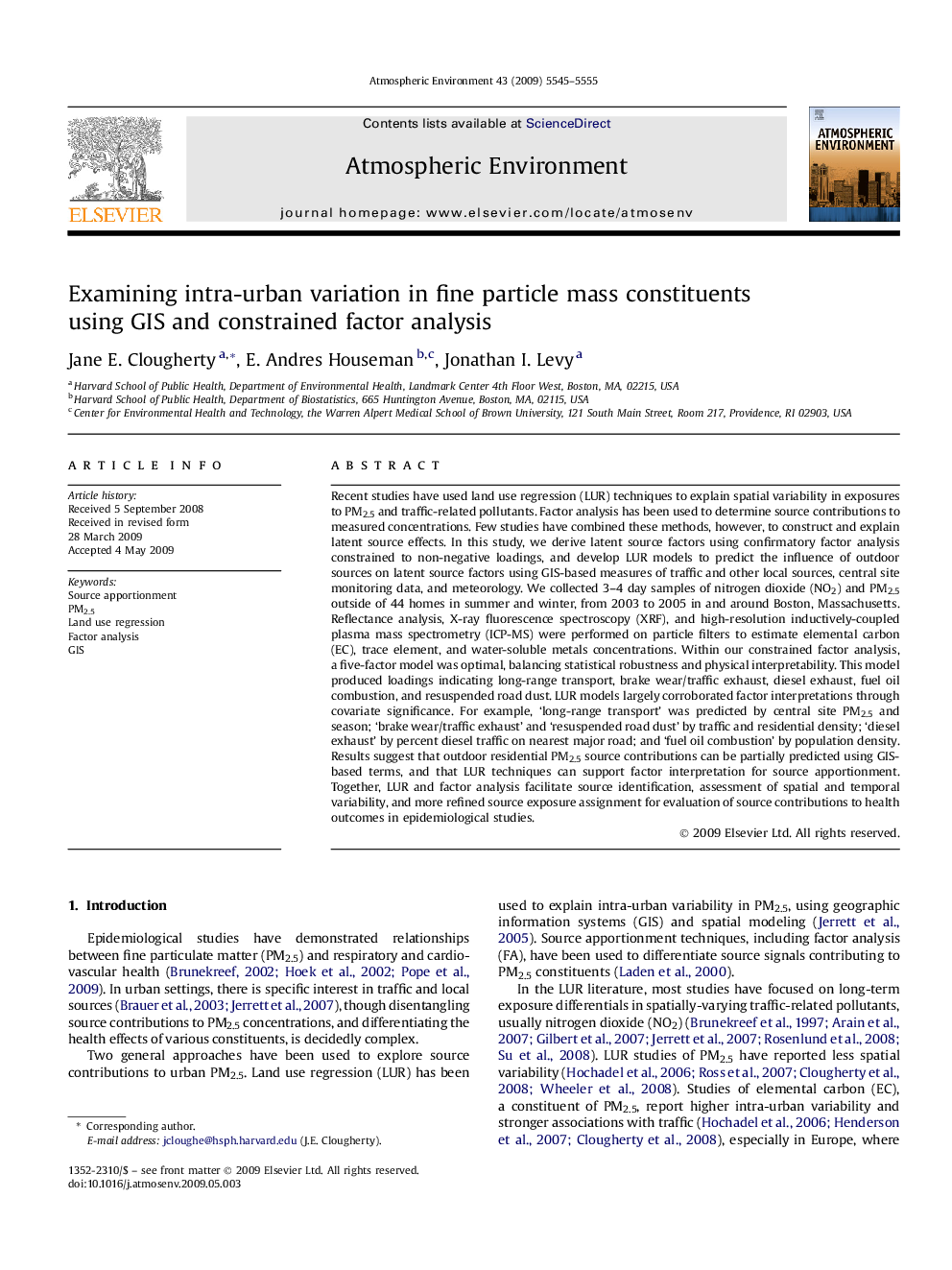| کد مقاله | کد نشریه | سال انتشار | مقاله انگلیسی | نسخه تمام متن |
|---|---|---|---|---|
| 4441138 | 1311093 | 2009 | 11 صفحه PDF | دانلود رایگان |

Recent studies have used land use regression (LUR) techniques to explain spatial variability in exposures to PM2.5 and traffic-related pollutants. Factor analysis has been used to determine source contributions to measured concentrations. Few studies have combined these methods, however, to construct and explain latent source effects. In this study, we derive latent source factors using confirmatory factor analysis constrained to non-negative loadings, and develop LUR models to predict the influence of outdoor sources on latent source factors using GIS-based measures of traffic and other local sources, central site monitoring data, and meteorology. We collected 3–4 day samples of nitrogen dioxide (NO2) and PM2.5 outside of 44 homes in summer and winter, from 2003 to 2005 in and around Boston, Massachusetts. Reflectance analysis, X-ray fluorescence spectroscopy (XRF), and high-resolution inductively-coupled plasma mass spectrometry (ICP-MS) were performed on particle filters to estimate elemental carbon (EC), trace element, and water-soluble metals concentrations. Within our constrained factor analysis, a five-factor model was optimal, balancing statistical robustness and physical interpretability. This model produced loadings indicating long-range transport, brake wear/traffic exhaust, diesel exhaust, fuel oil combustion, and resuspended road dust. LUR models largely corroborated factor interpretations through covariate significance. For example, ‘long-range transport’ was predicted by central site PM2.5 and season; ‘brake wear/traffic exhaust’ and ‘resuspended road dust’ by traffic and residential density; ‘diesel exhaust’ by percent diesel traffic on nearest major road; and ‘fuel oil combustion’ by population density. Results suggest that outdoor residential PM2.5 source contributions can be partially predicted using GIS-based terms, and that LUR techniques can support factor interpretation for source apportionment. Together, LUR and factor analysis facilitate source identification, assessment of spatial and temporal variability, and more refined source exposure assignment for evaluation of source contributions to health outcomes in epidemiological studies.
Journal: Atmospheric Environment - Volume 43, Issue 34, November 2009, Pages 5545–5555